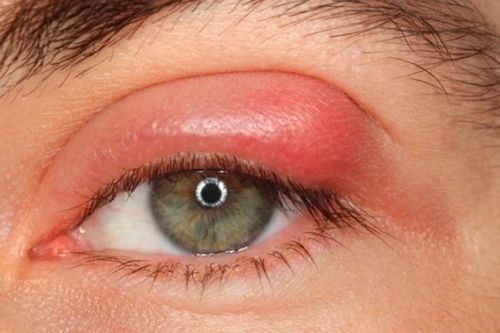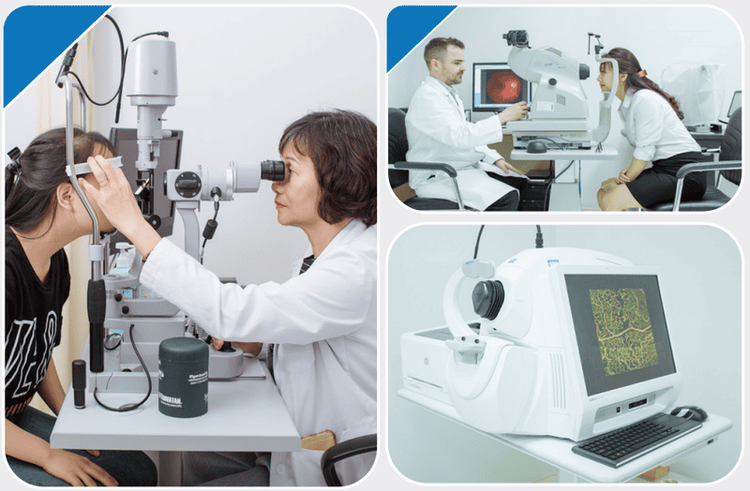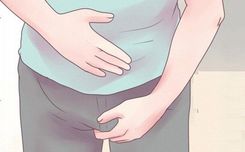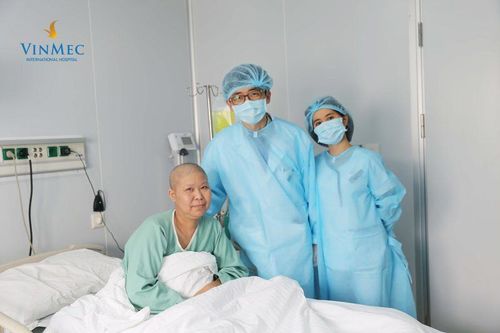Swollen and painful upper eyelids can be caused by weather allergies, makeup, or excessive sleep. However, swollen and painful eyelids can also be a warning sign of serious health conditions. The symptom of swollen eyelids may indicate that you are experiencing some health issues and need treatment.
1. Causes of Upper Eyelid Swelling and Pain
1.1. Orbital Cellulitis
Orbital cellulitis is a type of infection deep within the tissues of the eyelid. This condition can spread rapidly and is often very painful. Orbital cellulitis requires diagnosis by an ophthalmologist and treatment with antibiotics. Depending on the severity of the infection, you may need intravenous (IV) antibiotics.
1.2. Herpes Eye Disease
Herpes eye disease is an infection caused by the herpes virus in and around the eye. Although anyone can get it, it is most common in children. Herpes eye disease can have similar symptoms to pink eye but does not always cause visible sores.
To diagnose herpes eye disease, a doctor will take a sample from the eye to culture for the virus. Although the herpes virus remains in the body and there is no cure, antiviral medications can control the symptoms of this disease.

1.3. Blepharitis
Some people may have more bacteria in and around their eyelids than others. These bacteria can cause a condition called blepharitis. Clinical signs of blepharitis may include oily eyelashes and dandruff-like scales around the eyelashes. Some people with blepharitis experience swollen and painful eyelids. Blepharitis is a chronic condition that cannot be completely cured. At the same time, the disease tends to have severe attacks and then spontaneously subside. Preventive measures such as warm compresses, careful eye makeup removal, and eyelid scrubs can help. Sometimes, blepharitis leads to more serious infections. If an episode of blepharitis is more severe than previous ones, or if you have a lot of pain, consult an ophthalmologist.
1.4. Blocked Tear Duct
A blocked tear duct causes tears to be retained, leading to swollen and painful eyelids. Infants and young children are often more susceptible to blocked tear ducts. These symptoms usually improve by the time the child is 1 year old.
In most cases, a blocked tear duct is not harmful. You can apply warm compresses and massage your child to reduce swelling and help clear the tear duct. If the eyelid is swollen and painful, accompanied by fever, you should see a doctor immediately.
1.5. Conjunctivitis
Conjunctivitis is inflammation of the membrane that covers the white of the eye and the inside of the eyelid. Many factors can lead to this condition, such as bacterial infection, viral infection, allergies, toxic reactions such as chemical burns to the eye, parasites, fungi, etc. In this case, the patient's eyes are usually red, with swollen and painful eyelids.
Additionally, other health conditions such as exhaustion, excessive crying, heavy eye makeup, poor eye hygiene, and allergies to skincare products can also lead to swollen eyelids.
1.6. Congenital Causes
In some cases, swollen and itchy but not painful upper eyelids can be congenital. Therefore, some children have swollen upper eyelids and this condition persists until adulthood.
1.7. Aging
The aging process, causing the skin around the eyes to sag and the appearance of eyelid fat, is also a cause of swollen and itchy upper eyelids. In this case, excessive fat pads will cover the crease of the eyelid, causing the eyelid to droop.
1.8. Exhaustion
Sometimes, exhaustion can also be a factor that causes swollen and itchy upper eyelids. Overworking or frequent fatigue can easily damage the eyelids, especially in the morning. If you have swollen and itchy upper eyelids due to exhaustion, you can drink a glass of warm water in the morning and adjust your sleeping position to help reduce the condition.
1.9. Graves' Disease
This is a type of endocrine disorder that causes an overactive thyroid gland. This condition can also cause the thyroid gland to release cells to fight infection in the eyes. The antibodies released during this process can be the cause of swollen and painful eyelids.
1.10. Orbital Cellulitis
Orbital cellulitis is a type of infection deep within the eyelid tissues. Bacteria can spread rapidly and often cause severe pain. If you experience swollen and painful eyelids, you should see a doctor and get treatment immediately.
Orbital cellulitis is a serious infection that requires antibiotic treatment. Depending on the severity of the disease, intravenous antibiotics may be required.

2. Treatment for Swollen and Painful Eyelids
Most cases of swollen and painful eyelids can be treated with simple home remedies such as: applying a cool compress to reduce swelling and redness, keeping the eyes clean, and avoiding rubbing or touching the eyes. Additionally, you should avoid applying makeup to the eyelids and wash your hands frequently to prevent the spread of infection.
However, if you experience sudden swelling and pain in the eyelids, if the pain becomes severe, lasts for an extended period, or if there are changes in vision or other accompanying symptoms, you should see a doctor for an accurate diagnosis. It is important to identify the underlying cause of the swollen and painful eyelids. The cause will help the doctor prescribe the most effective treatment for each specific case. Some treatment methods may include:
- Treatment with anti-allergy medications: injections and oral medications as prescribed;
- Using antibiotic eye drops or oral antibiotics for bacterial eye infections;
- Using antiviral eye drops or ointments for cases of herpes or shingles;
- Reducing inflammation with corticosteroids or other anti-inflammatory eye drops;
Performing procedures such as incision and drainage if there are styes, blisters, or eye abscesses; - Removing foreign objects from the eye or eyelid;
In cases where swollen and painful eyelids are due to lack of sleep or excessive crying, drinking water can also help reduce swelling. You should combine moderate rest or cold compresses to speed up the healing process.
In cases where the cause is other medical conditions, the doctor may prescribe certain antibiotics and appropriate treatment therapies to address the underlying cause.
3. How Long Does It Take for Swollen and Itchy Upper Eyelids to Heal?
Similar to the treatment of swollen eyelids, determining the recovery time also depends on the cause of the swelling. For temporary causes such as allergies or rubbing, it may take a few hours to reduce the swelling and pain with home care measures or over-the-counter anti-allergy medications.
Swollen and painful eyelids caused by mild infections or blocked oil glands may improve within 1 to 3 weeks with appropriate treatment. Skin infections like cellulitis will take longer to treat and depend on the response to antibiotics.
Swollen and painful eyelids due to temporary edema or water retention after consuming salty foods can recover within 24 hours with home treatment, such as drinking plenty of water and reducing salt intake.
For more serious causes of swollen and painful eyelids, such as organ failure, preeclampsia, or thyroid disorders

4. Notes on Swollen and Painful Eyelids
When the cause of swollen and itchy upper eyelids is a stye or chalazion, do not attempt to squeeze it yourself as it can lead to more severe eye infections. If necessary, pus drainage should be performed by a specialist.
If you need to wear makeup, ensure you remove it properly to minimize the risk of eyelid inflammation, which can lead to swollen and itchy upper eyelids.
Whether you have an eye condition or not, avoid rubbing your eyes. Additionally, wash your hands frequently to reduce the risk of eye infections.
For those who are prone to allergies, limit exposure to dust, pet dander, pollen, etc.
In general, swollen and itchy upper eyelids are not too dangerous and can be managed with home care. However, sometimes they can indicate serious health issues. Therefore, if you notice any unusual symptoms, you should see an eye specialist as soon as possible.
To arrange an appointment, please call HOTLINE or make your reservation directly HERE. You may also download the MyVinmec app to schedule appointments faster and manage your reservations more conveniently.







